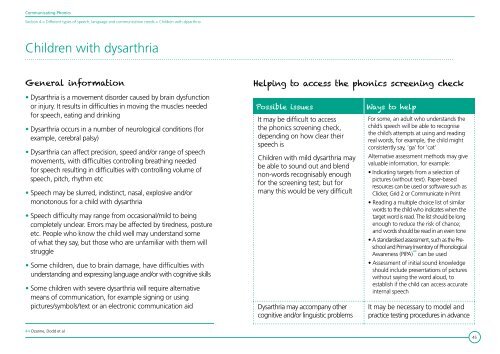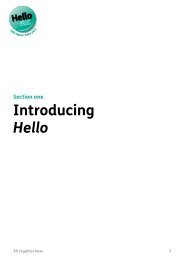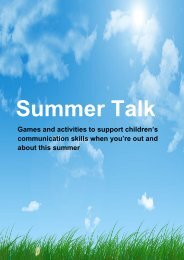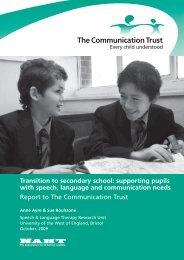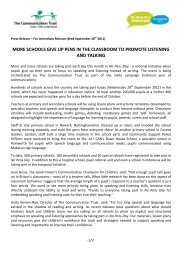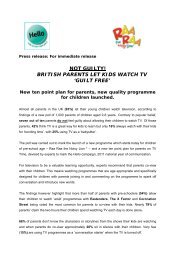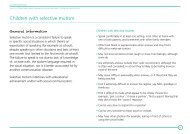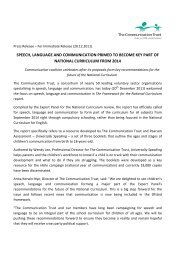Communicating Phonics - The Communication Trust
Communicating Phonics - The Communication Trust
Communicating Phonics - The Communication Trust
Create successful ePaper yourself
Turn your PDF publications into a flip-book with our unique Google optimized e-Paper software.
<strong>Communicating</strong> <strong>Phonics</strong>Section 4 > Different types of speech, language and communication needs > Children with dysarthriaChildren with dysarthriaGeneral informationHelping to access the phonics screening check• Dysarthria is a movement disorder caused by brain dysfunctionor injury. It results in difficulties in moving the muscles neededfor speech, eating and drinking• Dysarthria occurs in a number of neurological conditions (forexample, cerebral palsy)• Dysarthria can affect precision, speed and/or range of speechmovements, with difficulties controlling breathing neededfor speech resulting in difficulties with controlling volume ofspeech, pitch, rhythm etc• Speech may be slurred, indistinct, nasal, explosive and/ormonotonous for a child with dysarthria•Speech difficulty may range from occasional/mild to beingcompletely unclear. Errors may be affected by tiredness, postureetc. People who know the child well may understand someof what they say, but those who are unfamiliar with them willstruggle• Some children, due to brain damage, have difficulties withunderstanding and expressing language and/or with cognitive skills• Some children with severe dysarthria will require alternativemeans of communication, for example signing or usingpictures/symbols/text or an electronic communication aidPossible issuesIt may be difficult to accessthe phonics screening check,depending on how clear theirspeech isChildren with mild dysarthria maybe able to sound out and blendnon-words recognisably enoughfor the screening test; but formany this would be very difficultDysarthria may accompany othercognitive and/or linguistic problemsWays to helpFor some, an adult who understands thechild’s speech will be able to recognisethe child’s attempts at using and readingreal words, for example, the child mightconsistently say, ‘ga’ for ‘cat’Alternative assessment methods may givevaluable information, for example:• Indicating targets from a selection ofpictures (without text). Paper-basedresources can be used or software such asClicker, Grid 2 or Communicate in Print•Reading a multiple choice list of similarwords to the child who indicates when thetarget word is read. <strong>The</strong> list should be longenough to reduce the risk of chance;and words should be read in an even tone• A standardised assessment, such as the Preschooland Primary Inventory of PhonologicalAwareness (PIPA) 44 can be used• Assessment of initial sound knowledgeshould include presentations of pictureswithout saying the word aloud, toestablish if the child can access accurateinternal speechIt may be necessary to model andpractice testing procedures in advance44 Ozanne, Dodd et al45


